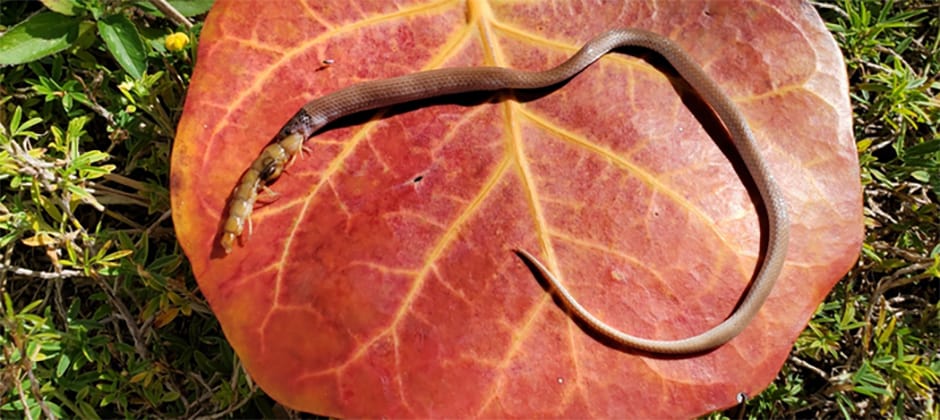Share this article
What killed North America’s rarest snake?
When North America’s rarest snake made an appearance in the Florida Keys for the first time in four years, it should have been good news for conservationists. But the snake was dead, and its death was something of a mystery.
The rim rock crowned snake (Tantilla oolitica) was found at a park in Key Largo with a half-swallowed giant centipede still in its mouth. It was a big centipede—about a third the size of the snake—but snakes’ jaws are designed to help them digest jumbo-sized prey.
To understand what happened, researchers at the Florida Museum used CT-scanning technology to give them a glimpse inside the snake without damaging the specimen.
“We were able to perform a digital autopsy, which allowed us to examine the centipede and snake, including its injuries and gut contents, without ever picking up a scalpel,” said Jaimi Gray, a postdoctoral associate at the museum.
They found that while the centipede had left a small wound on the snake’s side, its hefty size had pinched off the snake’s trachea, cutting off its air supply. They published their findings in Ecology.
The rare snake specimen remains on the museum’s collection shelves.
Header Image: This rim rock crowned snake was found dead, with a centipede in its mouth, at a park in Key Largo, Florida. Researchers used CT-scanning technology to find the cause of death. Credit: Drew Martin








